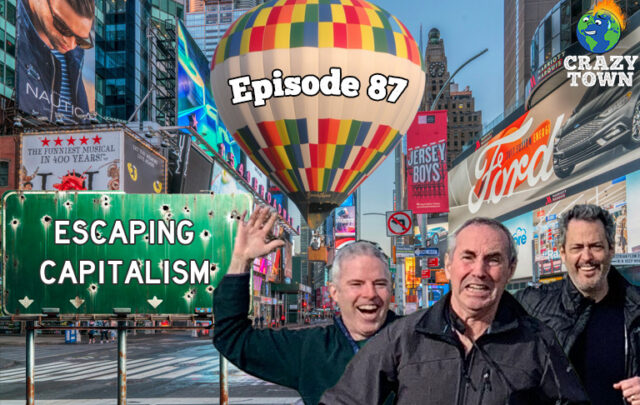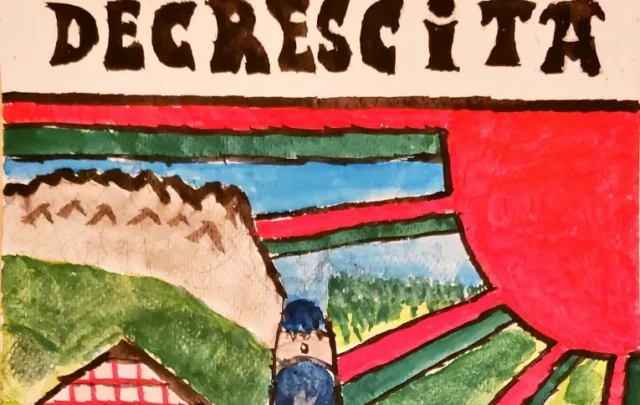
Introduction
We are living through an unprecedented crisis, in a world beset by massive social problems – the obscene poverty and inequality that neoliberal capitalist globalization has wreaked on at least two-thirds of humanity, the immobility of the political elite almost everywhere, and cultures of violence that poison our lives from the most intimate relations to the mass murder of the world’s wars.
These interconnected problems are rooted in long-standing processes of inequality – patriarchy, racism, colonialism, capitalism, and now corporate-controlled globalization – whose ongoing, overlapping legacies are making the early twenty-first century a crucial hinge of history.
And now, with climate change, we are facing a perfect storm of suffering. In fact, given the timeline that climate science is screaming at us, we confront a crisis of humanity and of all species that must be resolved for better or worse by those living on this precarious planet today. We are called by the urgency of the crisis to “change everything” as Naomi Klein puts it, and to do so in something like the next two decades.
With other observers, activists, and scholars I believe that only the assembling of the broadest, most powerful social movement the world has ever seen has a chance of doing this in the narrow window the science imposes on us. The movements for environmental, climate, and social justice that I have spent my life studying and now participate in must become much stronger than at present. But my reading of world history leads me to believe that they can succeed. They must, if we are to safely navigate the present crisis and even come out of it living in ways that are far more egalitarian, deeply democratic, and fulfilling than the world we presently inhabit.
Those of us who are academics (or journalists, or writers and creators of culture of every kind) need to focus our minds now, I think, on the “wicked” problem of climate change, to reinvigorate our own disciplines and work on our interdisciplinary skills (another way of saying learning how to connect the dots) and bring all this into a wide open dialogue, in ways that are consistent with the first principle of sociology, of ecology, of systems thinking, and, ironically enough, of Buddhism, as I understand it (and of Gaia theory, for that matter): everything is connected.
How Strong is the Climate Justice Movement?
The movement I study and am part of is growing, getting bigger, stronger, smarter, more diverse, and more creative with every passing year – and that’s important.
But it’s still not enough.
The task – and the question on every scholar-activist’s mind – is how do we get from where we are to where we need to be? And how do we do that thoughtfully, quickly, and for the long haul?
If I had to try to sum up the broad outlines of what the climate justice movement is planning going into 2016, it would be something like Resist, Rethink, Retool, Re-imagine…
What Happened in Paris at the UN Climate Summit?
Let’s do a global stock take – as the UNFCCC [United Framework Convention on Climate Change, which oversees the annual climate summits] likes to call it – of the recent “Paris Agreement.” I’ve thought about this a fair amount, gathering into a bundle some of the fascinatingly divergent analyses, and as Paris recedes into the rear view mirror, more and more I’m coming to the view that that’s where it belongs – behind us. Paris comes down to a cynical joke played on the peoples of the world.
The Paris Agreement calls on the world to keep global warming “well under 2 degrees, and as close to 1.5 degrees as possible.” That is useful, but like the rest of the high-minded words in this non-binding agreement, it is merely “voluntary” and “aspirational,” and at the rate these negotiations have been going for two decades, it will take at least the next ten COPs for them to get any traction (the COP refers to the Conferences of the Parties, as the climate negotiations are called, followed by the number of years since the first in 1995, making Paris COP 21).
We can’t let them delay that long, or the window for two degrees will close…
I titled my blog post on the day of the treaty “Paper Heroes.” I think I may have stumbled onto one of the deep truths of what went down. Paris was so triumphalist and so flimsy that it bears comparison to the shrillness of the know nothing/do nothing crowing of the Trump campaign.
Will the movement use it against its architects (the well-meaning capitalist reformists of the UNFCCC and the enlightened wing of the one percent) and against our enemies – the fossil fuel industry, the political elites, the rich, the banks, and all the rest? That’s a certainty.
Will we throw the cynical references to indigenous rights, a gender perspective, vulnerable nations, human rights, and intergenerational equity into their faces? Yes, we will.
Will we seize on the phrase “climate justice, as some call it” they so patronizingly let appear in the text – yes, we intend to make them come to rue the day they wrote them, and force them to understand these words, if we can.
To hold the line on climate change to “dangerous” levels (that is the best we can do, and we are headed for “extremely dangerous” – in all probability catastrophic – at present), we would need something akin to a radical climate moonshot, an ecosocialist World War II-type war effort, a great transformation of everything that is so wrong about the world we live in. Everything.
How do we do it? Or “What I’ve learned about how to change society radically (in a good sense, of course!) in the last thirty-six years…”
Revolutions – and other movements for radical social change[1] – require broadly-based alliances of people from multiple classes, both (or more) genders, and cross-racial/ethnic alliances to succeed.
People get involved in such movements when one or more political cultures of opposition and resistance gain adherents (Foran 2014). The origins of such political cultures start with the experiences of people, in the grievances they endure and the emotional and political responses they fashion using every available cultural tool and historical memory they possess. For example, when collective discourses like environmentalism or feminism are available in the form of consciously articulated ideologies, would-be social actors take them up and put them to work locally, and in this way they tend to diffuse through activist groups into local settings and circulate among social movements. Perhaps more importantly, popular idioms or folk understandings – what student of revolutions Eric Selbin calls “rich stories,” or cross-generational political imaginaries in the language of my research partner Richard Widick – are also available for use, providing new social actors as well as seasoned activists with locally understood, everyday terms such as fairness, justice, or democracy. In the case of climate activism, this might mean justice, buen vivir, historical responsibility, or intergenerational equity.
When these take hold in a large enough social group or wider society, often through the work of some kind of radical/progressive organization or network, a social movement can gain enough committed followers to take decisive action. The forging of a strong and vibrant political culture of opposition is thus a collective accomplishment, carried through by the actions of many people.
In any given society, there usually exist multiple political cultures of opposition, for people do not necessarily share the same experiences, speak similar idioms, or respond as one to the call of formal ideologies. The most effective social movements find ways of bridging the differences through the skillful creation of a common goal, such as the concise demand for “System change, not climate change!” raised at COP 15 in Copenhagen in 2009. When this happens, a movement’s chances of growth and success are considerably increased.
Such alliances, and the political cultures of opposition that motivate them, are an indispensable factor in the making and success of revolutions.
There are, of course, also political and economic factors involved in a revolution’s success. I explored these in depth, and developed a model of the causes of revolutions in Taking Power: On the Origins of Third World Revolutions.
Unfortunately, all twentieth-century and anti-colonial social revolutions fell short of the achieving the dreams of those who made them. The reasons for this include:
~ fragmentation of the broad revolutionary alliance after it came to power
~ intense outside pressures, usually from the First World, often from the U.S.
~ pre-existing inequalities, both within and between countries
~ lack of popular participation in governing (related to the first factor)
But 21st-century movements for radical social change – recall that my definitions is not restricted to revolutions – look different from their 20th-century counterparts because:
~ they are mostly non-violent
~ they are more horizontally organized
~ they are even more diverse
~ they have dynamic new political cultures of opposition and resistance
They also feature exciting political cultures of creation… Movements become even stronger when to a widely felt culture of opposition and resistance they add a positive vision of a better world, an alternative to strive for that might improve or replace what exists. As David Pellow has put it: “Many movements begin with a grievance or a critique, but what sustains them and pushes people out into the streets (or underground) is often a vision, a dream of something better.”
These movements are coming to power or attempting to do so, in some strikingly new ways: through elections, as in the case of the “Pink Tide” governments in Ecuador, Bolivia, and Venezuela (and now attempting this in Europe, or even with the Bernie Sanders campaign); through occupations of public spaces, as in the wave of the Occupy movements of 2011 and others since; through regional or local power-taking, or of re-making the nature of power altogether, as the Zapatistas have been doing in Chiapas since 1994; and through global networks such as the global justice movement of the 2000s, and now the global climate justice movement.
All of these movements are increasingly intersectional in terms of both their social make-up (crossing race/ethnic, gender, and class lines) and the issues they are connecting the dots of.
The movements that are most likely to succeed will feature some new combination of 1) stronger social movements and political cultures of opposition and creation, and 2) new kinds of parties, joined in 3) some new kind of networked structure, and 4) operating locally, nationally, and globally.
In a nutshell, the sum of my study of revolutions and movements for radical social change in the 20th and 21st centuries so far is this:
We may need a combination of both a dense network of movements and a totally new type of political party to achieve anything like deep radical social change.
These movements will have to develop both powerful political cultures of opposition, and compelling political cultures of creation.
At least these are hypotheses for scholar-activists to debate!
Conclusion: What is to be done?
As for the global climate justice movement, might it prove to be the most radical social movement of the twenty-first century?
It could if we make it so. We need to operate on all levels: local to global, and from short-range defensive action against every fossil fuel project and electoral ploy, to medium-range reforms (like the Bernie Sanders campaign perhaps? Come to think of it, the Sanders campaign is pretty short range at the moment, isn’t it?), to long-range radical (anti- or post- capitalist?) change.
With the added challenge that definition of “medium-range” in our critical present moment has been shortened to something like “from now to the next four years” and “long-range” “from now to the next 10-15 years” because that’s all we’ve got to bend the arc of climate justice.
But it can be done. We will not “save” the world. My reading of climate science makes me agree with ecosocialist scholar-activist Brad Hornick on this point:
All thinking clearly about climate and political realities can do is change the nature of the struggle.
It’s not an easy prospect as it requires heart-wrenching personal and collective existential crisis (questioning meaning in all facets of life and work).
I’ll say it now: there is conclusive evidence-based scientific determination of irreversible physical changes that will by necessity cause catastrophic destruction to civilization in the coming decades. Full stop.
We are at the point where we need to acknowledge these truths. It will come now or later – and if it comes later it will hit us much harder, and will mean deterioration in the relevance of certain life/work/political strategies.
It’s hard to say it better than that. Consider this essay a wake-up call, colleagues. A call to arms, comrades. The time is now. We are the available ones. All of us.

[1] Radical social change means, for me, “a deep transformation of a society (or other entity such as a community, region, or the whole world) in the direction of greater economic equality and political participation, accomplished by the actions of a strong and diverse popular movement.”






